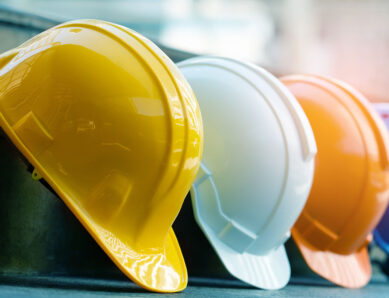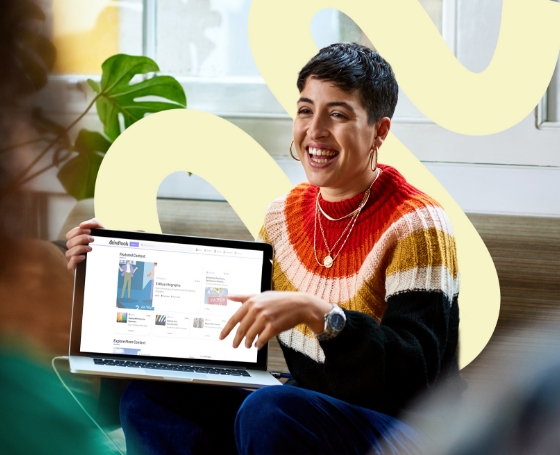Six years ago, I started participating in various Twitter chats and fell in love with the idea of being virtually connected to like-minded people across the globe. I suggested to Mind Tools that we should also host a regular Twitter chat. Little did I know that we would go on to build such a fantastic online community.
One of our regular participants, Mike Barzacchini (@mikebarzacchini), is a keen community builder, and he was also our guest host in last Friday’s tweet chat. In this blog, Mike shares how he stayed connected during the pandemic, and the lessons he’s learned along the way.
Building Community in a Pandemic
One of the most important things you can do on this earth is to let people know they are not alone.
Shannon L. Alder, American author
I’ve always loved being part of a community. I rely on them for inspiration, support and solutions. Communities also create opportunities for me to use my talents to help others.
Like many people, my wife Susan and I were separated from family, friends and colleagues during the pandemic. Instead of retreating into the shadows, we worked hard to build a network of communities that would help us stay connected with the outside world.
Here are five communities that helped me through this past year:
1. Becoming Part of the Pack
Shortly before the pandemic, we started volunteering with a local dog rescue. Through my time with this close-knit community, I’ve learned the simple joys of caring for others by rehoming more than a dozen dogs. I joke with Susan that my new job title may be “pack manager.”
2. Rolling the Dice
In the early days of lockdown, we started a weekly Yahtzee game via Zoom with friends across the country. Now, more than a year later, we’ve created a Yahtzee community. We cheer each other on, celebrate the great rolls, and commiserate the bad ones. The games also serve as a vehicle to share stories, offer support, and combat isolation.
3. Creating Community at Work
I work at a community college with a group of more than 20 talented and creative professionals. When our on-campus meetings were no longer an option, we quickly moved to virtual catch-ups. We were able to check in with each other every day regardless of location or schedules. As a result, we had richer conversations and more detailed updates, all while delivering our usual high-quality projects.
4. The Virtual Breakroom
Our team thrived on the social and collegial gatherings in our office breakroom. Nowadays, we have a virtual breakroom where team members can share family updates, recipes, and their latest binge-worthy TV shows. This space has been an important reminder of the power of personal connections and community, even – and perhaps especially – among colleagues.
5. Finding Time to Connect
During the pandemic, I noticed that I often had free time on Friday mornings. Keen to utilize the space in my schedule, I scheduled calls with colleagues I’d lost contact with. Not only were we able to catch up, but we also brainstormed new projects and cross-pollinated ideas. This is still a fledgling community. I don’t know where it will take me or what the result will be. But I’m excited by the possibilities.
Lessons in Community Building
Through these experiences, I’ve learned many lessons that have made me a better community builder and participant. I’ve learned the value of patience and persistence, and how an open mind can lead you to the most unexpected outcomes. I’ve developed my ability to focus on the things that matter, and on how to celebrate successes.
Community in the Future
As we emerge from the pandemic to whatever’s next, I expect the communities I’ve experienced these past months to thrive and evolve. Our weekly Yahtzee game is going strong. I expect the virtual breakroom will also live on, even as we gather again in our physical one. And Susan and I are just getting started with rescuing and fostering dogs. I have fully embraced my “pack manager” status.
I’m also looking forward to taking lessons learned to new community-building opportunities in the future. Working, learning and celebrating together sparks joy in my life. No matter the challenges, I expect community building in its many wonderful forms and functions to continue to carry me forward.
The Power of Building Community
During the #MTtalk Twitter chat last Friday, we talked about building community: how to do it, and why it’s important. Here are the questions we asked and some of your most insightful responses:
Q1. How do you define “community”?
@MikeBarzacchini A great opening question. I don’t know if I have one definition. It plays off the last #MTtalk topic for me regarding connections. Community for me is taking that connection to the next level, with frequency, and a greater depth of interest, intention, and action.
@lg217 I define a community as a group of people who come together for a common cause and purpose.
@ColfaxInsurance A community is a group of people who come and work together based on a common interest. They support, encourage, teach, and learn from each other.
Q2. Why is community building, or being a part of a community, important to you?
@NWarind Community is a sign that people are working with unity.
@pavelStepanov77 People love to be with other people. We love to connect with others because it gives us a sense of belonging.
Q3. What communities have helped sustain you during the past year?
@DrKashmirM Communities are helping in the pandemic and provide safe venting places for people of all ages.
@MicheleDD_MT A group of friends from a former workplace – we share a common experience and have weathered a lot of life experiences together.
Q4. How do you build a community? Where do you start?
@J_Stephens_CPA Just being willing to connect can help – met several people from the #ATDVirtualConference by hosting a Zoom Happy Hour after each day’s session. Several of us continued to meet throughout last summer one evening a week.
@LernChance Find a common denominator, shared interests. Or a common goal.
Q5. What are the traits of a good community builder?
@Yolande_MT Good community builders know how to involve others and make them feel purposeful. They know how to make people feel welcome and wanted.
@SizweMoyo Honesty, compassion and dedication would be my top three. There’s a lot that goes on that we don’t see but I think with these three, a community builder could start and finish the never-ending job.
Q6. What are some unusual or surprising ways you’ve helped build community?
@MikeBarzacchini During the pandemic, we started a weekly Yahtzee game via Zoom, and from it built a community of family and friends from across the country. We not only rolled the dice, but we also comforted, laughed with, and learned from each other through the pandemic.
@JKatzaman Recognizing others for their good work is an easy way to build a community, particularly because people like to see other names as well as their own.
Q7. What are the challenges of building or sustaining a community?
@Jamburu When you do things for them instead of with them.
@Dwyka_Consult There’s nothing that can break apart a community as badly as internal politics. It’s seldom a force for good.
Q8. How might you deal with toxic behavior in your community?
@MikeBarzacchini I know some communities have established and agreed-upon guidelines. That may help. And acknowledging that the community member’s toxic behavior may be a signal they don’t want to remain in the community and making it OK for them to leave may help.
@SizweMoyo I’m a firm believer in straight talk, but it can be done in private. Take the toxic member to the side, tell them how they’re ruining the community and how they could improve. If they can’t get it after that, it’s okay to cut a man loose.
Q9. What lessons about community building from this past year will you take into the future?
@Tanjiskas That everyone is different and that this is the beauty of the community and that it will lead to amazing things.
@ColfaxInsurance Be empathic, but don’t let people take advantage of you. It’s ok to leave a community if it doesn’t fit you anymore. Be you, share your story, and be active to get the most out of your time in a community. Be honest, be kind.
Q10. How can you encourage people to join your community – or to build their own?
@Yolande_MT Find a way to solve a problem for others. Make use of people’s strengths: creatives, those who take initiative, the supporters, cheerleaders, practical thinkers. Value all roles!
@MicheleDD_MT Leverage the power of social media. Identify prospective members and recruit them.
To read all the tweets, have a look at the Wakelet collection of this chat here.
Coming Up
In a community where you feel safe, accepted and connected, it’s easier to accept yourself and to be unapologetically you. Next week we’re going to talk about “leaning in to who you are,” and in our Twitter poll we’d like to know what that means to you.
“Leaning in to Who You Are” Resources
Meanwhile, here are some resources designed to help you embrace your true and authentic self. (Some of these may only be available in full to members of the Mind Tools Club.)
Building Good Work Relationships
Five Ways to Build Rapport Online
Creating an Energizing Work Environment
10 Ways to Overcome a Fear of Networking
Making the Most of Employee Resource Groups
Corporate Social Responsibility





Comments
Pamela Bacon says
4 years agoI enjoy the support in the middle of a difficult time. You bring hope. Thanks for brightening my thoughts.
Yolande Conradie says
4 years agoYou're welcome, Pamela. We truly understand that it's a difficult time for many, and our "difficults" aren't all the same. However, we can all reach out and support each other in different ways. :-)